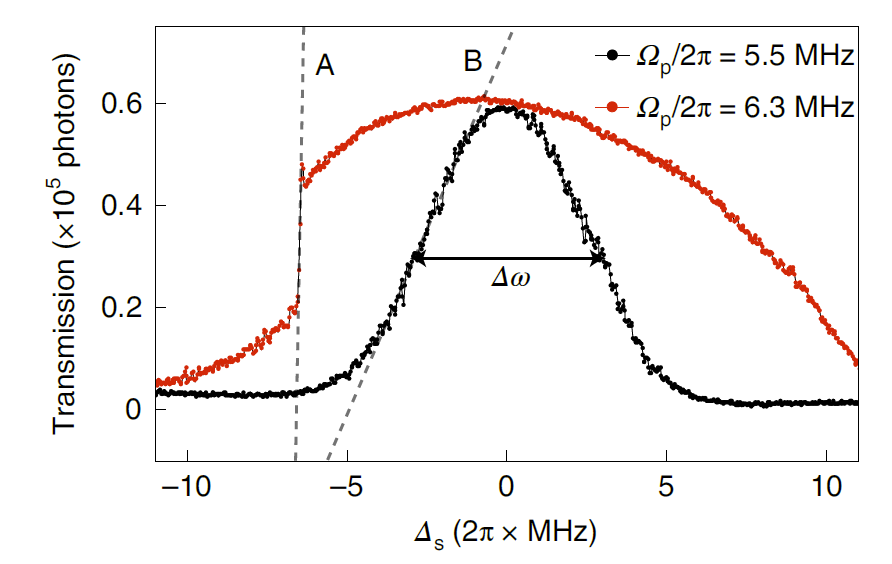Precision measurements with a cloud of strongly interacting atoms
A collaborative effort between CCQ and colleagues in Hefei, China and Durham, England reports in a recent Nature Physics article how an ensemble of atoms permits high precision measurements due to a sensitive “nothing-or-all” switching mechanism in their dynamics.

From Niels Bohrs theory of atoms to the absorption of light by many atoms
Niels Bohrs atomic theory explains how light with just the right frequency can be absorbed by an atom, which becomes excited in the process. If some atoms are highly excited they may interact strongly with each other and hereby change the frequency needed to excite other atoms. This mechanism has been pursued in several projects in CCQ, e..g, for light-matter interfaces, simulation of complex dynamics and quantum computing.
“We all go together when we go”
The absorption of light was seen to switch abruptly for a very small change in light frequency in experiments carried out in Hefei, and in joint experimental and theoretical analyses with CCQ and Durham partners it was demonstrated that this can be employed to significantly improve precision measurements and sensing, e.g., of very weak electric and magnetic fields. The experimental procedure employs a laser beam with a variable frequency which illuminates a cloud of atoms. The intensity transmitted in the normal case of non-interacting atoms shows a smooth dependence on frequency while the excitation of strongly interacting atoms leads to an almost step-like transmission curve – se figure. By fixing the laser close to this step, the system becomes sensitive to even very weak signals. If only enough atoms would become excited, the laser frequency would fit to excite them all, so only a gentle push is needed to get them going – like the collapse of a tall stack of bricks.
Spot on center research goals and strategies
The current project achieves two of the main goals of CCQ: the study of emergent macroscopic behavior in complex quantum systems and the identification of new sensing mechanisms. The work is perfectly aligned with general theory efforts within CCQ and the center strategic plans to collaborate with international expert teams on a variety of experimental platforms. Many projects in CCQ grow out of ideas and collaboration based on international exchange of students and young international researchers. While this specific project was established and carried out by CCQ principal investigator Klaus Mølmer, it has forged a partnership with expert groups with whom we may engage future CCQ students and postdocs.
The article "Enhanced metrology at the critical point of a many-body Rydberg atomic system" can be found here: 10.1038/s41567-022-01777-8
